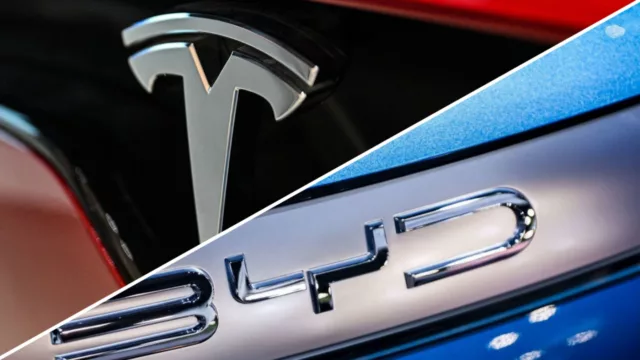
Technology is advancing at a pace that is sometimes hard to keep up with, especially when it comes to the technology being implemented in our vehicles. What was cutting-edge yesterday may seem obsolete today, and in the world of electric cars, this dynamic becomes even more fierce and voracious. The giants of the industry compete not only to build the fastest or most stylish car but to dominate the heart of these vehicles: the battery, and position themselves at the top of the race.
In this new round of the game, it has been BYD, the Chinese company, that has played all its cards, and without exaggeration, it could be surpassing Tesla, not with futuristic promises or smoke, but with cheaper, more efficient, and much better-designed batteries. What if the future of mobility doesn’t come from Silicon Valley, but from Shenzhen?
Changes in the future of electric cars
As we said, BYD is declaring war on Elon Musk and Tesla’s batteries. Better designed, better prepared, and everything suggests they will be a real headache for Tesla.
The research, published in Cell Reports Physical Science, thoroughly analyzed the two technologies setting the pace: BYD’s Blade Battery and Tesla’s 4680 battery. The results not only reveal differences in approach but also significant technical and economic advantages that could tip the balance in BYD’s favor in the coming years.
Technology vs. Philosophy
Tesla has always bet on innovation, but its Asian rivals have preferred practicality and efficiency over constant innovation. This study reveals that Tesla continues to design its batteries with the logic of traditional models (with expensive materials and finishes intended for combustion engines), while BYD has gone all in, completely changing the concept of the electric vehicle, eliminating unnecessary components and prioritizing simple solutions to reduce costs without compromising performance.
Two ways of understanding the electric car
BYD’s Blade Battery uses LFP (lithium iron phosphate) technology. This chemistry is not new, but it is very effective: although its energy density is lower than that of the NCM (nickel-cobalt-manganese) used by Tesla, its lifespan is longer, it’s safer, more stable, and, above all, cheaper to produce. And that last concept is precisely what stands out: cheap.
As for Tesla, the 4680 battery (made up of large cylindrical cells that improve energy density and offer more range), according to the study, generates twice as much heat as BYD’s, requiring more advanced and expensive cooling systems. This not only increases the price but can compromise the long-term health of the battery pack.
Costs, efficiency, and durability
The researchers calculated the cost per kilowatt-hour (kWh), considering the weight, materials used, and energy generated by each cell. The result was clear: BYD’s battery is 10 euros cheaper per kWh produced, which translates into a savings of 600 euros per 60 kWh battery compared to Tesla.
Is the electric future Chinese?
Although autonomy differences were not directly evaluated (since that also depends on motors, aerodynamics, and other vehicle factors), it was concluded that BYD’s LFP batteries are more suitable for urban or mid-range cars, while Tesla’s NCMs are aimed at high-performance vehicles.
Comparisons are never pleasant, but in this battle, BYD has taken the crown, efficiency proves more useful than costly innovations. Perhaps this “wake-up call” to Tesla will help it rethink its philosophy a bit more, and who knows, maybe we are looking at a new battle that leads to more competitive prices, and we all end up winning!









